
Puyarruego

The mill is ideally situated to house a visitor center for the Ordesa National Park.
Pictures: 23.V.2011


Pictures: 23.V.2011
| waterworks | central eléctrica |

But still, a visit is time well spent because there is lots to see.
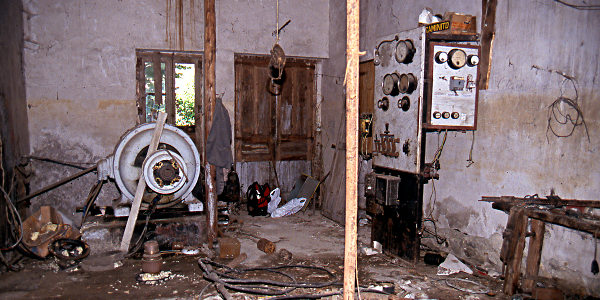
Three nets were served, each with a dedicated circuit-breaker (15) and a dial giving the electric current going through the wires (14). The circuit-breakers are labeled Belsierre (built on the adjacent hill), Puyarruego (just across the river) and T. Tierras.

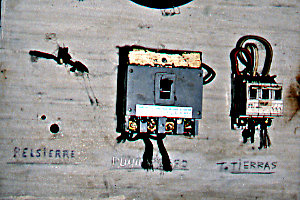
Two more control panels are present (13, 16): one on wood and the other one on stone. The panel left is stripped of all instruments except for one switch (200 AMP) and six paired lamp fittings. Some of the pieces can be found between the rubble on the floor.

The dials on the 2nd row are for the current. The surviving dials (17, 18) are from different brands. Asea and Brown Boveri, after a long history of merges, became one company in 1988.
The next row shows two wheels. Turn left means raise (English, indeed), right is lower. I presume it's about voltage regulation.
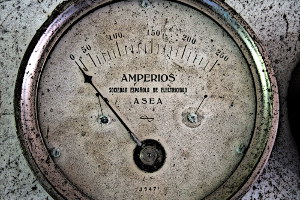
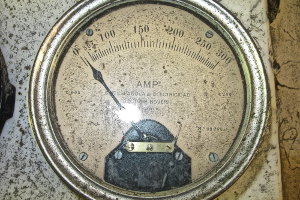
In order to keep the voltage always at the same level a RODANG device was mounted below the main panel (13). In the 1950s one could often find advertisements for this brand which was distributed by a Comercial Eléctrica Aznar in Madrid.

| REGULADOR AUTOMATICO DE TENSION | ||||||
| N° | TIPO | |||||
| 4.190 | JA14 | |||||
| OHMS | VOLTS | K.V.A. | ||||
| PAT. REG. | 120 | 220 | 55 | |||
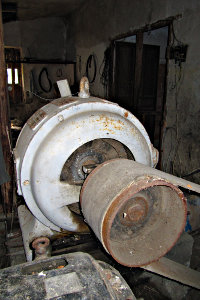
The turbines are a level lower and can easily be reached via the stairway (22). The installation at the right (23, 25) is labeled Teisset Chapron * Brault Fs * Chartres. The regulator in the living quarters (24) however carries the text Teisset Brault & Chapron Paris.
The turbine left (27) is labeled Maquinaria y Metalurgia Aragonesa - N ?35 - Zaragoza - Utebo. The command wheel (26, in the old bathroom) features no text. A turbine of the same brand can be found in Aguinalíu. The company was born in 1902 and reached its top during the 1930s with about 250 people which is about three times as many as Averly, that other famous company. More about MMA in Salinas de Jaca.
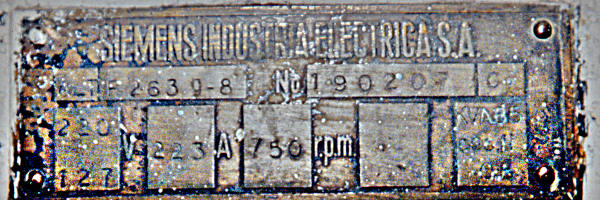
| SIEMENS INDUSTRIA ELECTRICA S.A. | ||||||||
| ALT | F 263 9-8 | No. | 190207 | Co | ||||
| 220 127 | V | 223 | A | 750 | r.p.m. | KVA85 cosfi 0,8 | ||
| SIEMENS INDUSTRIA ELÉCTRICA S.A. | |||||||
| Exc | GME85/10 | No. | 185778 | Co | |||
| 110 | V | 21,8 | A | 750 | r.p.m. | KW 2,4 | |
| ASEA | VASTERAS SWEDEN |
swastika | ||||
| D.C. GENERATOR | K O ??? | |||||
| Type | 19-51-? | No. | 23388 | |||
| Output KW | 1.6 | Rating | cont | |||
| Volts | ? | Amps | ?45 | |||
| R.P.M. | 1000 | ExcVolts | 118 | |||

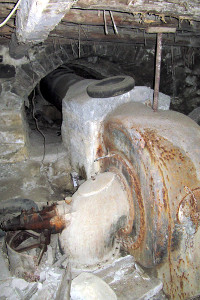

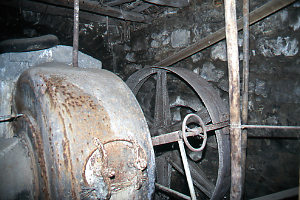

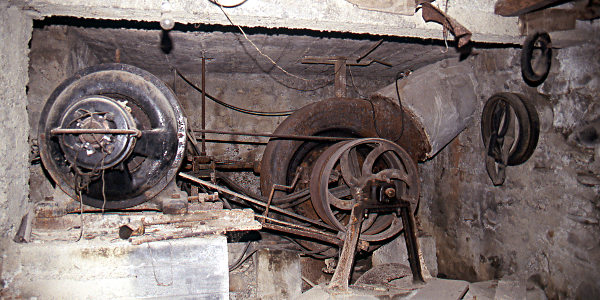
| waterworks | central eléctrica |
| † |
— 1990 — La evolucion reciente del cauce del río Ara.
Cuadernos I. Geográfica: 16/1-2, pp 99-108 See Boltaña for a picture of the November flood of 1997. |